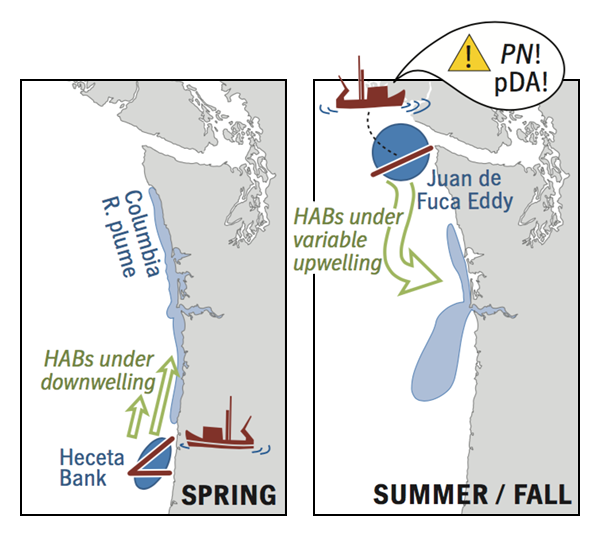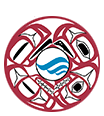HAB Forecasts

Neil Banas / PNW HAB Bulletin Team
The Pacific Northwest HAB Bulletin (PNW HAB) provides an early warning of HABs to coastal managers. Data for the PNW HAB Bulletin, including abundance of the toxic diatom, Pseudo-nitzschia (PN), and the toxin, domoic acid (pDA), are collected by ship from HAB hotspots, such as the Juan de Fuca Eddy and Heceta Bank (see figure above), at beaches in Washington and Oregon, and from coastal moorings. Coastal currents and winds regulate the direction of plankton transport from HAB hotspots to beaches where their growth is fueled by nutrients from upwelling. Observations from moorings, ships, and at beaches are used to locate HABs and to characterize their environmental drivers. Models are used to track information about the location and intensity of the Columbia River plume (see figure above) that can act as a barrier or conduit for HAB transport to beaches. These Bulletins allow coastal managers to better protect shellfish safety in the communities by opening selective beaches, identify sites where additional shellfish samples (Dungeness crab, clams, and mussels) are needed, and ultimately to provide advanced notice of HABs to the public. Information from the PNW HAB Bulletin allows for better protection of marine mammal health, by providing detailed information on the location of HABs, allowing for informed testing for toxins in these marine mammals and their prey.

